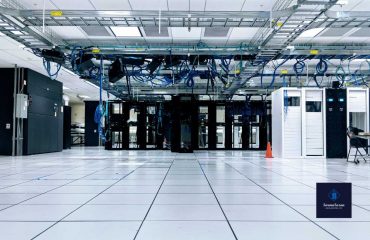Earlier, we talked about what a VRF system is and explained how it works. Now, we will examine the common types of VRF systems available in the market.
Common types of VRF systems
VRF systems are available in a variety of cooling systems, heat pump systems or heat pumps, and finally heat recovery systems, the latter of which can generate both heat and cold.
Heat pump VRF system
This system can produce both cold and heat, but depending on seasonal conditions. In this way, they can only produce heat in the cold season and only produce cold in the warm seasons, not simultaneously. Another name for this system is the two-pipe system.
Heat recovery system
A heat recovery system or three-pipe system, as mentioned, can produce cold and heat at the same time. In this way, some rooms and areas can use its cold production and others its heat production. Because for each indoor unit is defined a separate tube for liquid, suction and flow. Liquid tubing is used in both heat and cold generation, but it is the suction and discharge tubes that work in rotation during cold or heat generation.
In this way, when a cooling state is defined for a unit, the liquid pipe is the path and the suction pipe is the return path. In this way, each indoor unit acts as an independent evaporator. In the heating mode, the outlet pipe is the departure path and the liquid pipe is the return pipe. In this case, the whole unit acts as a condenser.
In addition, a number of heat exchangers are installed in the path to direct the heat dissipated by the cooling units to the heating units that need heat. In this way, the need for a VRF system is met by the system itself, which saves significant energy consumption.
Advantages of VRF systems
- Since there are no channels in the VRF system, unlike traditional and older systems, there is no temperature drop, because air does not have to circulate between these channels. Result; Heat and refrigeration transfer is constant and high efficiency.
- Another advantage is that VRF systems produce less noise pollution and have a quieter performance than older air conditioners.
- A VRF system eliminates air temperature fluctuations
The key to comfort in a room is to prevent temperature fluctuations. In older and traditional systems, the compressors are either on or off; Therefore, when this compressor is turned on and off, the room temperature fluctuates.
Since in a VRF system the compressor speed can be variable, the system can continue to operate continuously for a long time. The innovative technology of the compressor in this system adjusts the refrigerant flow based on the needs and the amount of temperature that is pre-determined for each room or area in the building. This allows the system to transfer heat or cold to any room as needed without any oscillations.
- In the VRF system, it is possible to adjust the temperature of each room and range individually.
- In addition to setting the temperature separately for each area, it is possible to take advantage of the heating and cooling capacity in a building at the same time.
- It is not necessary to install one outdoor unit for each indoor unit, so the outdoor unit is a number and can be installed in the best place. Also, the outdoor unit is light and compact and
- does not cause installation problems and problems.
- This system does not require another heat source such as a boiler and works without the need for other devices or additional parts and the engine room.
- The VRF system is practically considered an intelligent system.
Disadvantages of VRF systems
- The VRF system uses electricity as the main source of energy. Therefore, compared to some other air conditioning systems such as duct split, not using city gas and full-time use of electricity, will lead to high electricity costs, and this issue will be more prominent in the cold seasons.
- Companies manufacturing VRF systems for vertical spacing between indoor and outdoor units; The maximum allowable size is predetermined, which means that there is a limit to the distances above this set size. In this way, many high-rise buildings can not install the VRF system on themselves.
- So far, a lot of research has been done on refrigerants and selecting the best ones, but there are still refrigerants that are used that are harmful to the environment. One of the predictable events in this system is the leakage of refrigerants, and if this happens, both the health of individuals and users will be endangered and will lead to environmental damage.
- Another disadvantage of this system is the high cost of repairing them. This means that if the system malfunctions and people are forced to repair it, they will have to pay the equivalent of a new system.
- The cost of installing a VRF system is high, and it also requires relevant specialists.

 English
English  فارسی
فارسی 



